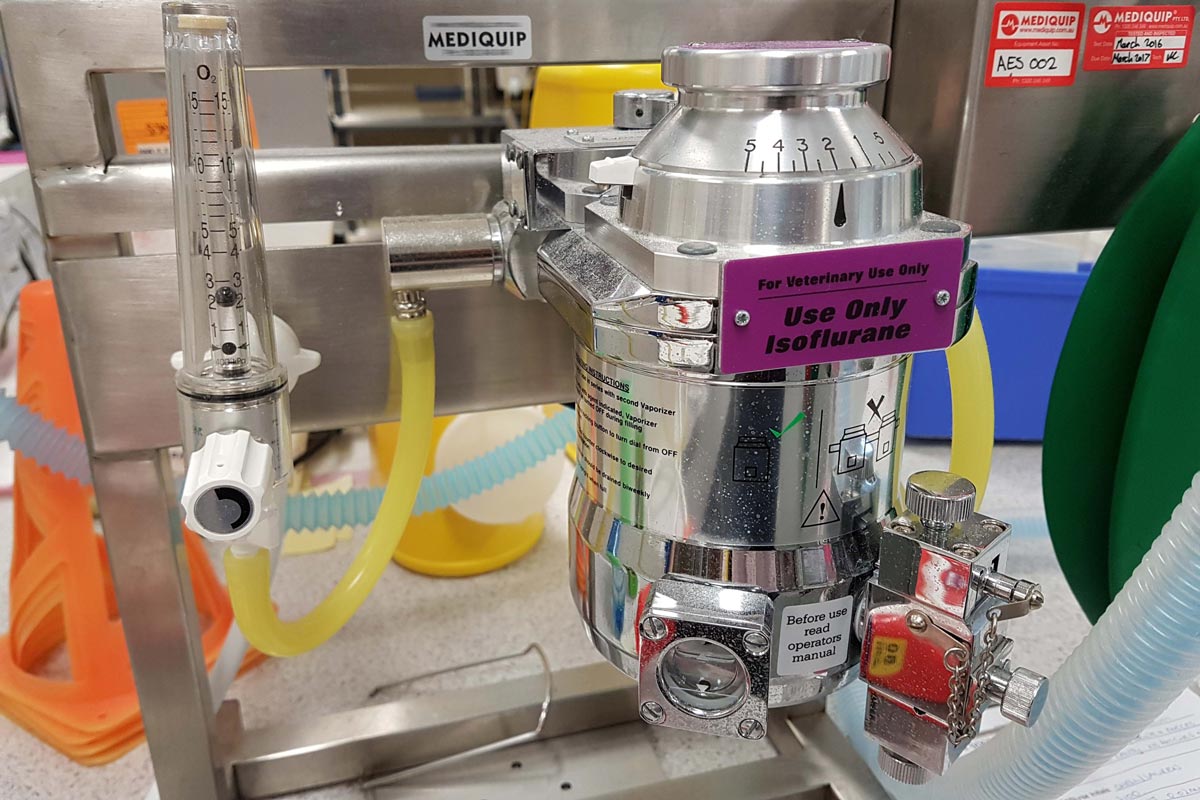It is a common practice to place all patients on 2% isoflurane and 2l/min oxygen flow rate, but blanket isoflurane saturations and oxygen flow rates can be dangerous.

Without a doubt, the majority of patients seem to do just fine at these levels; but every patient is different, and simply placing all patients on 2% isoflurane and 2l/min oxygen may be introducing an easily avoidable risk into anaesthesias.
Isoflurane
Isoflurane can cause severe effects such as hypotension and respiratory depression, so 2% isoflurane may be too high – especially for patients that are critically ill or have been premedicated with sedatives/anxiolytics.
In these patients, the isoflurane can be safely titrated down while monitoring the patient’s reflexes and vitals. Consider administering IV pain relief instead of turning up the isoflurane levels if the patients are too “light” and responding to pain. Examples include a low dose pure-opioid.
It is important to titrate its use like any other anaesthetic agent, maintaining an appropriate level of anaesthesia while minimising potential side effects.
Oxygen
It is common to use a standard 2l/min oxygen flow for all anaesthetics regardless of the type circuit, but this will not meet the oxygen requirements for larger patients. It is best practice to work out the appropriate flow rate amount using an oxygen consumption chart.
I cannot stress enough the importance of taking the time to consider your anaesthetic approach in patients, especially compromised ones such as those with renal/hepatic disease or circulatory deficits.
Titrating anaesthetic agent levels can increase the stability of your patient under anaesthesia and significantly reduce the life-threatening complications.
- Gerardo Poli is the author of The MiniVet Guide to Companion Animal Medicine – now available in the UK.

Leave a Reply